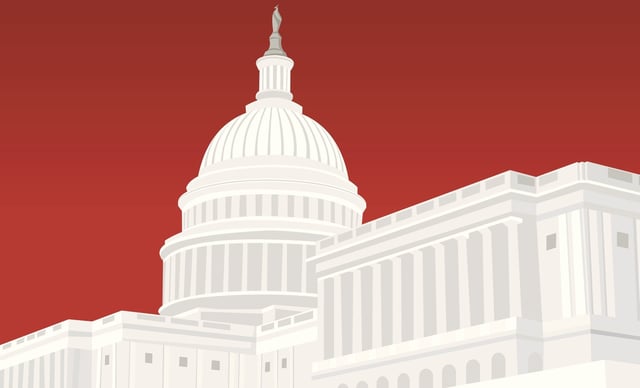 While the private sector can more freely embark on an IT initiative, government IT is accountable to its citizens. As a consequence, it has little control over the budget, and it needs to be transparent in everything from purchasing decisions to data management. The situation hands government IT unique challenges in terms of budget, accountability, expertise, manpower, and timetables, among others.
While the private sector can more freely embark on an IT initiative, government IT is accountable to its citizens. As a consequence, it has little control over the budget, and it needs to be transparent in everything from purchasing decisions to data management. The situation hands government IT unique challenges in terms of budget, accountability, expertise, manpower, and timetables, among others.
When we take a closer look, it’s possible to quantify the challenges facing government IT. The following four things that it faces are all challenges that IT departments in the public sector are aware of, but they need to be understood by the public sector beyond IT in order to enact changes that can foster timely and appropriate solutions.
Challenge #1: Lack of Transparency
While government agencies are working to improve their transparency to respond to the needs of citizens, outdated technology solutions are holding these efforts back. In order to respond to citizens' technology expectations for convenience, agencies must focus on the Internet, mobile devices, and social media to communicate with citizens and to provide better services.
Challenge #2: Outdated Infrastructure Legacy System Incompatibility
In 2015, states collectively spent nearly $30 billion on IT, which is on track to be outpaced by this year’s expenditure. The challenge is that most of that money is going to maintain legacy systems. In a survey last year, almost half of state CIOs said that 80 percent or more of their budget is spent on maintaining existing systems, leaving little opportunity to invest in new solutions that could enhance productivity.
In the public sector, government IT is faced with the challenges of outdated legacy hardware, data center overload, and establishing infrastructure that can handle up-to-date technologies. The root of the problem is that legacy system incompatibility makes it unfeasible to simply install new systems, as they cannot communicate with legacy systems. In short, the networks of these organizations cannot fully support the requirements of cloud computing, mobile, the Internet of Things, and big data.
Challenge #3: Insufficient Staffing
Private sector’s growing need for skilled IT personnel is clear due to the sheer numbers of businesses and organizations raising their voice and fighting for the limited talent pool. For the public sector, the problem is far greater due to a growing retirement wave and the fact that personnel budgets are even more restricted in most cases. The combination of these two factors makes it much more difficult to attract highly skilled IT talent in the volume necessary to adequately fill the growing need.
According to the 2016 Center for State and Local Government Excellence survey, one in four government employees were eligible to retire. Because the survey shows that the lack of IT professionals is a major challenge for the public sector, these entities must figure out how to fill the positions and how to refocus the roles to be more strategic in nature.
Challenge #4: Slow Changes Due to Bureaucracy
While government IT personnel are aware of the need to implement changes and adopt new technologies, they are bogged down by bureaucracy and limited in their access to resources. For example, even though IT security is considered a must-address issue, it could be derailed by several impediments, including:
- An inability to configure and interoperate between secured and unsecured environments
- Encryption and identity access management challenges
- Multiple stakeholders across different agencies
All of these and other issues around the bureaucratic nature of the public sector lead to stalled initiatives as these entities try to decide how to proceed. In the interim, government IT has been forced to get its work done despite growing network obsolescence and complexity, insufficient budgets/expertise/manpower, and bureaucracy. Fortunately, there are solutions that can deal effectively with all of these challenges.
Solutions
According to the Forrester report Predictions 2016: The Government's Slow Progress, which covers government IT trends, government entities are working to embrace data transparency and agile interagency collaboration for a better customer experience. One of the chief ways that they can accomplish these goals is partnering with the right managed services provider (MSP).
MSPs with a longstanding track record working with the public sector can bring government IT solutions that range from consulting on cloud implementations to IT expertise that can be called upon on demand. These solutions can more easily be brought to bear within current budget models that move the costs from the “capital expense” column to the “operating expense” column.
Some of the leading MSPs are armed with the experience to more easily support government IT departments in quickly traversing the bureaucracy of the public sector. These firms are skilled at dealing with budgeting constraints that enable them to find and implement the latest solutions that turn IT projects from an inflexible capital expense into a flexible and affordable operating expense.
In addition, their experience in the public sector where committees, a dense RFP process, and the ability maneuver in politicized circles across departments and within communities, can be a source for helping government IT departments create winning proposals. This enables the public sector IT organization to show the real-world effectiveness of a solution and its ROI. This is a major hurdle in the public sector where political stakeholders, department heads, comptrollers, and communities must be convinced of clear IT project benefits in terms of cost savings and ROI.
Local, state, and federal governments are aiming to make their tech initiatives more open, responsive, technically up to date, and secure. As a consequence, state and local IT leaders are dealing with years of pent-up demand and are now focused on numerous new initiatives. For state and local leaders, the priorities often highlighted are security, cloud, consolidation, and big data/analytics. The right MSP partner can be the catalyst for making these initiatives a reality in the present.




Comments